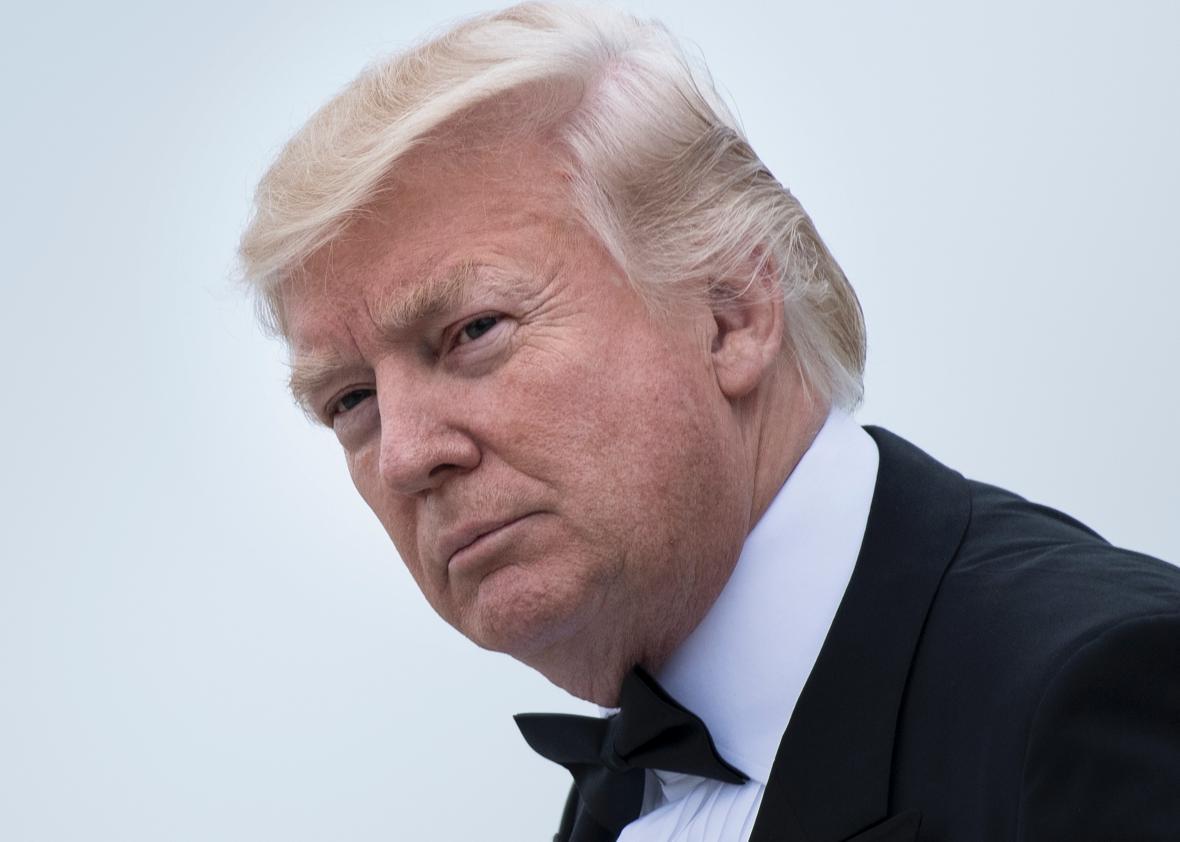What does it mean to obstruct justice, according to the law? One manifestly relevant federal statute is 18 U.S. Code § 1505, which states that an obstructer of justice is anyone who “corruptly, or by threats or force, or by any threatening letter or communication influences, obstructs, or impedes or endeavors to influence, obstruct, or impede the due and proper administration of the law under which any pending proceeding is being had before any department or agency of the United States, or the due and proper exercise of the power of inquiry under which any inquiry or investigation is being had by either House, or any committee of either House or any joint committee of the Congress…”
Note the word corruptly. Any prosecutor considering bringing charges against someone for obstruction of justice must consider that person’s intent—whether he acted corruptly or, say, out of carelessness or ignorance. According to two experts I spoke with Tuesday night, one way to show corrupt intent is to look at a pattern of behavior. A bunch of individual actions that, on their own, don’t conclusively prove anything about a person’s state of mind can, taken together, add up to something meaningful. With Trump, that kind of pattern could include the following:
- His dinner with James Comey on Jan. 27. According to the New York Times, Trump asked Comey for a pledge of loyalty at least twice, and was politely rebuffed.
- His decision to invite Comey to that dinner, which the Times suggested was a last-minute affair (“Only seven days after Donald J. Trump was sworn in as president… the F.B.I. director was summoned to the White House for a one-on-one dinner with the new commander in chief”). If that inference is correct, that means Trump decided he wanted to speak to Comey—and to get his pledge of loyalty—just one day after Sally Yates warned the White House that Michael Flynn had lied about his contacts with Russian officials and could be vulnerable to blackmail.
- The Feb. 14 Oval Office conversation described in the Comey memo the Times wrote about Tuesday. According to the Times, Comey wrote that Trump told him, “I hope you can let this go,” and that the president did this after instructing several of his top advisers, including Attorney General Jeff Sessions, to leave the room.
- Comey’s firing on May 9, and Trump’s subsequent admission that he booted the FBI director after thinking about how “this Russia thing” was a “made-up story.”
- Trump’s decision to publicly threaten Comey on Twitter by saying that the now-former FBI director “better hope that there are no ‘tapes’” of their conversations.
There might be more than what I’ve laid out here, but even this much seems like a pretty clear pattern. Trump knew Comey was working on an investigation he didn’t approve of, and he knew it affected him directly because one of his top advisers was a target. After asking Comey to have dinner with him one on one, trying and failing to extract an assurance of loyalty, and later suggesting that he drop the investigation into Flynn, Trump fired Comey and later threatened him on Twitter.
Legally speaking, this clearly isn’t an open-and-shut case. But it seems at least possible that this could be enough to show corrupt intent.
